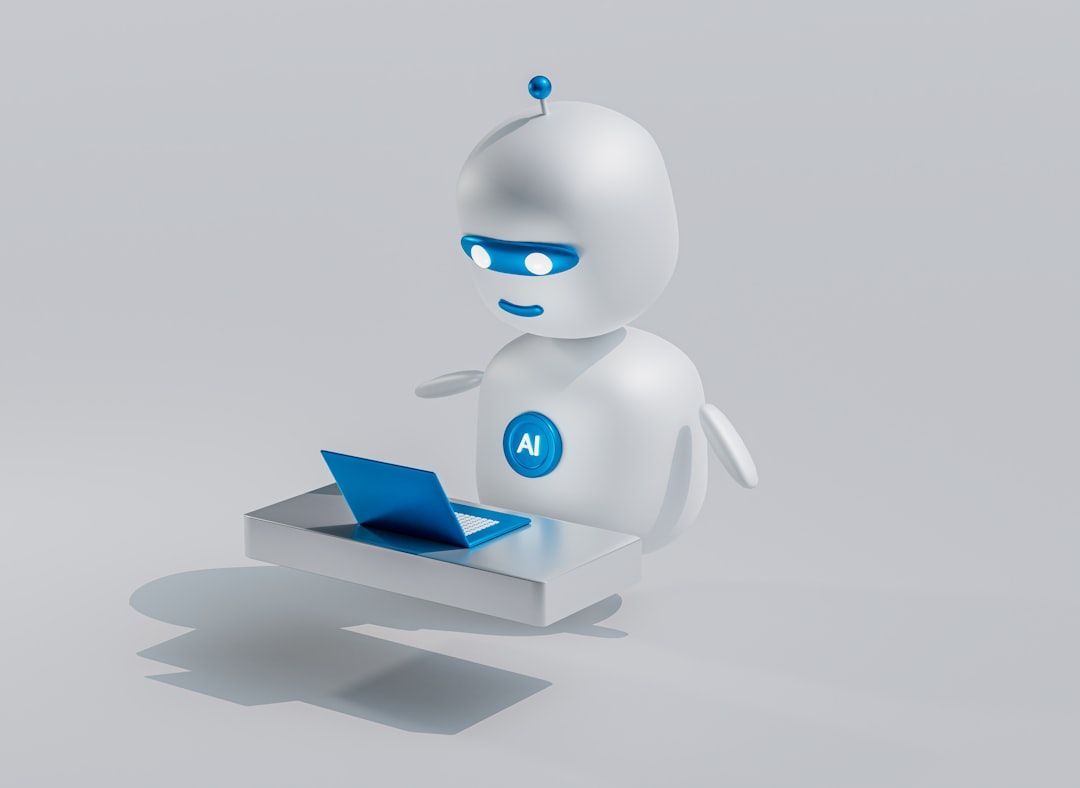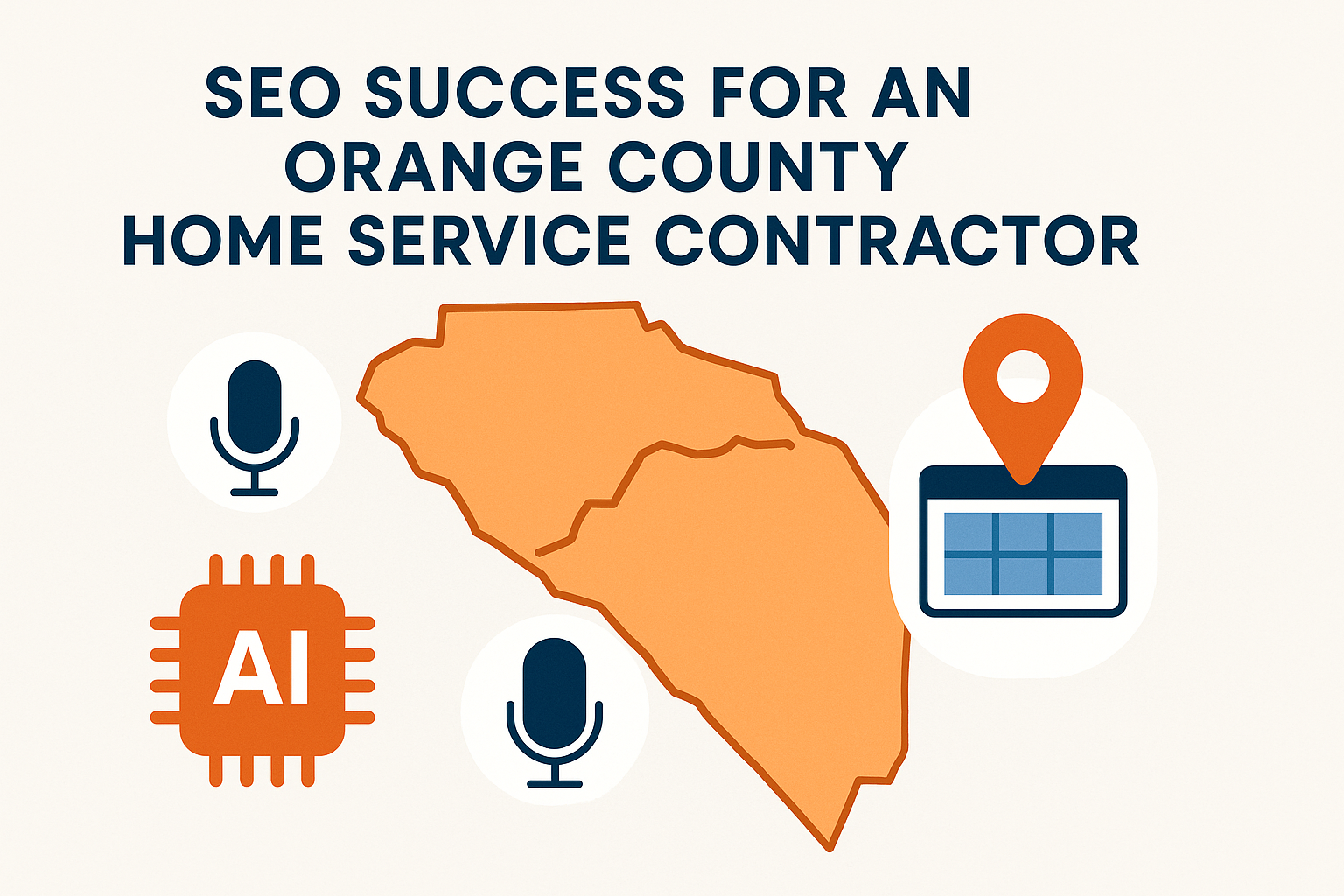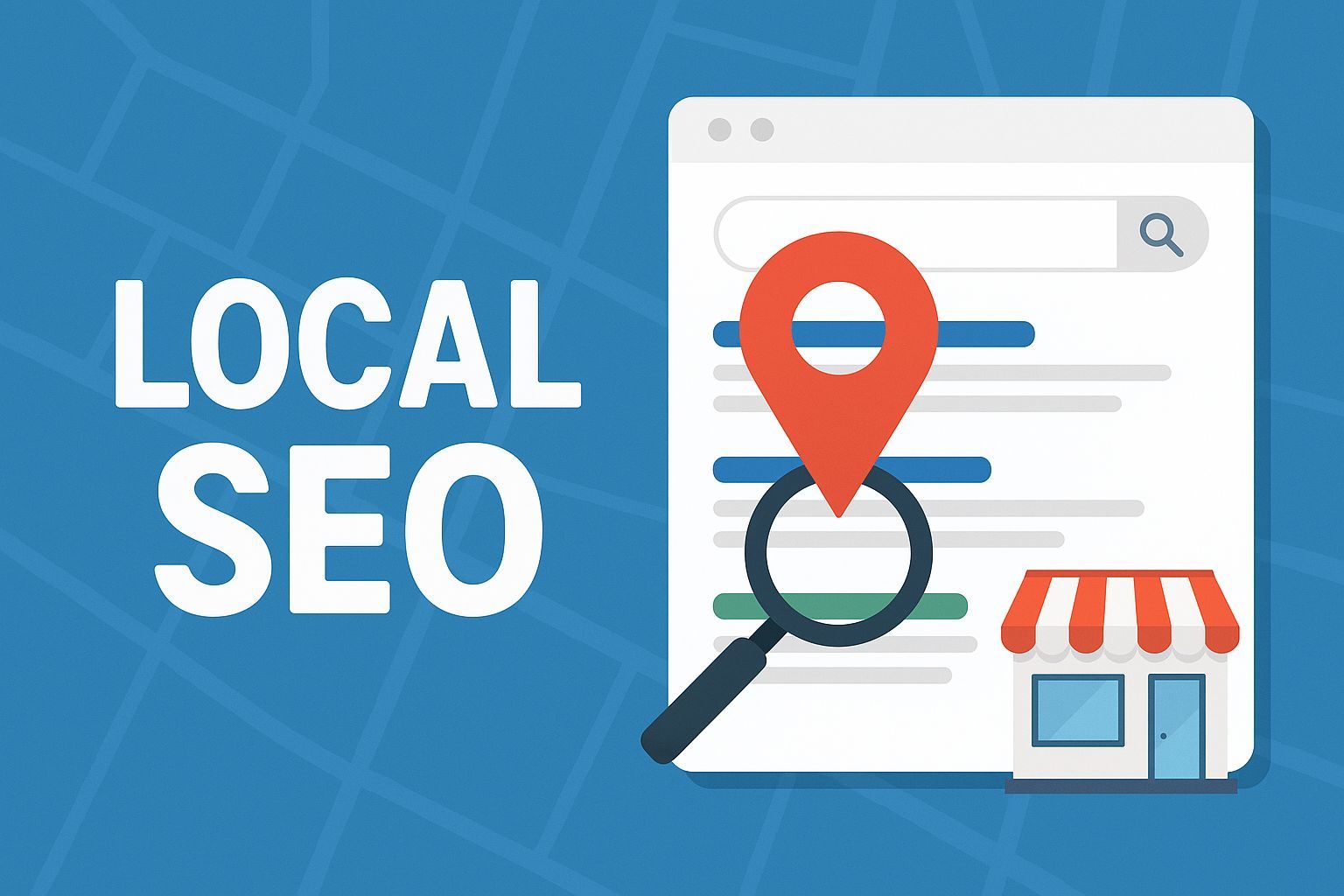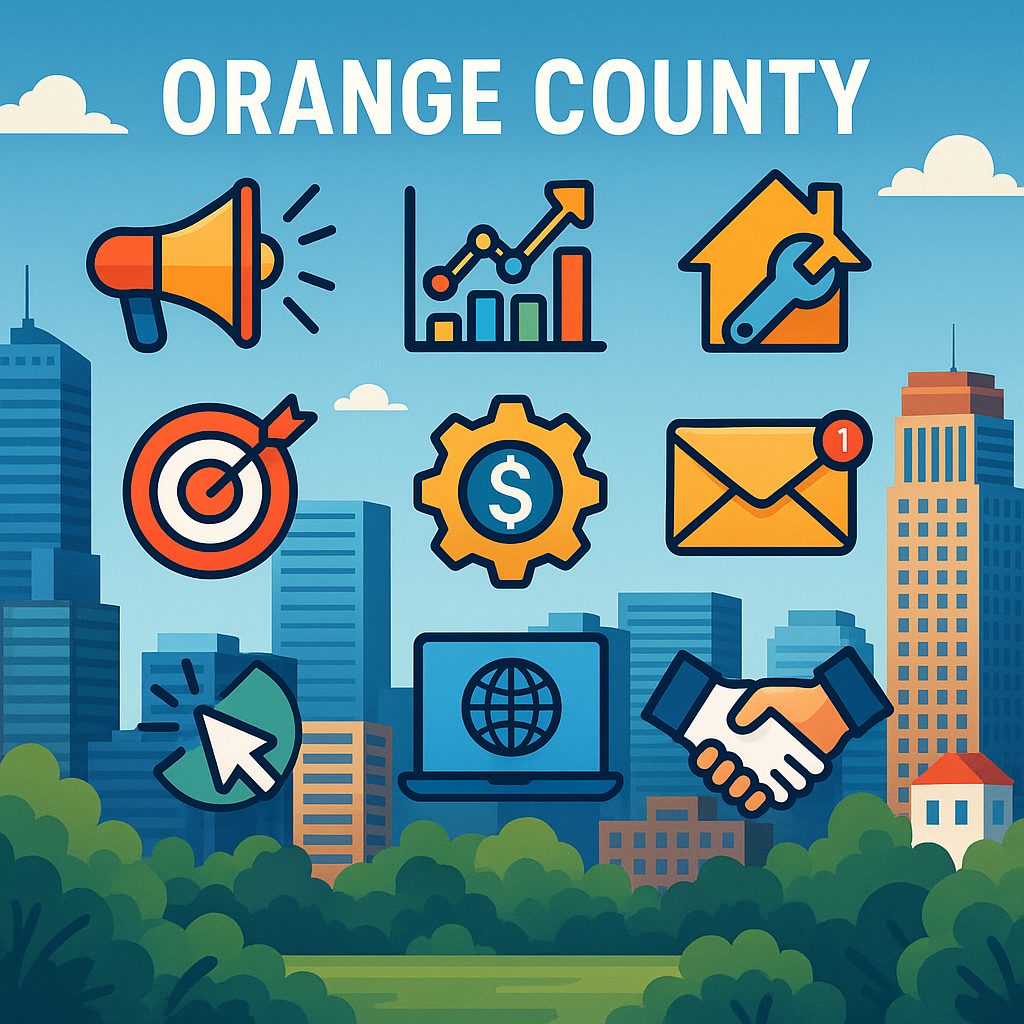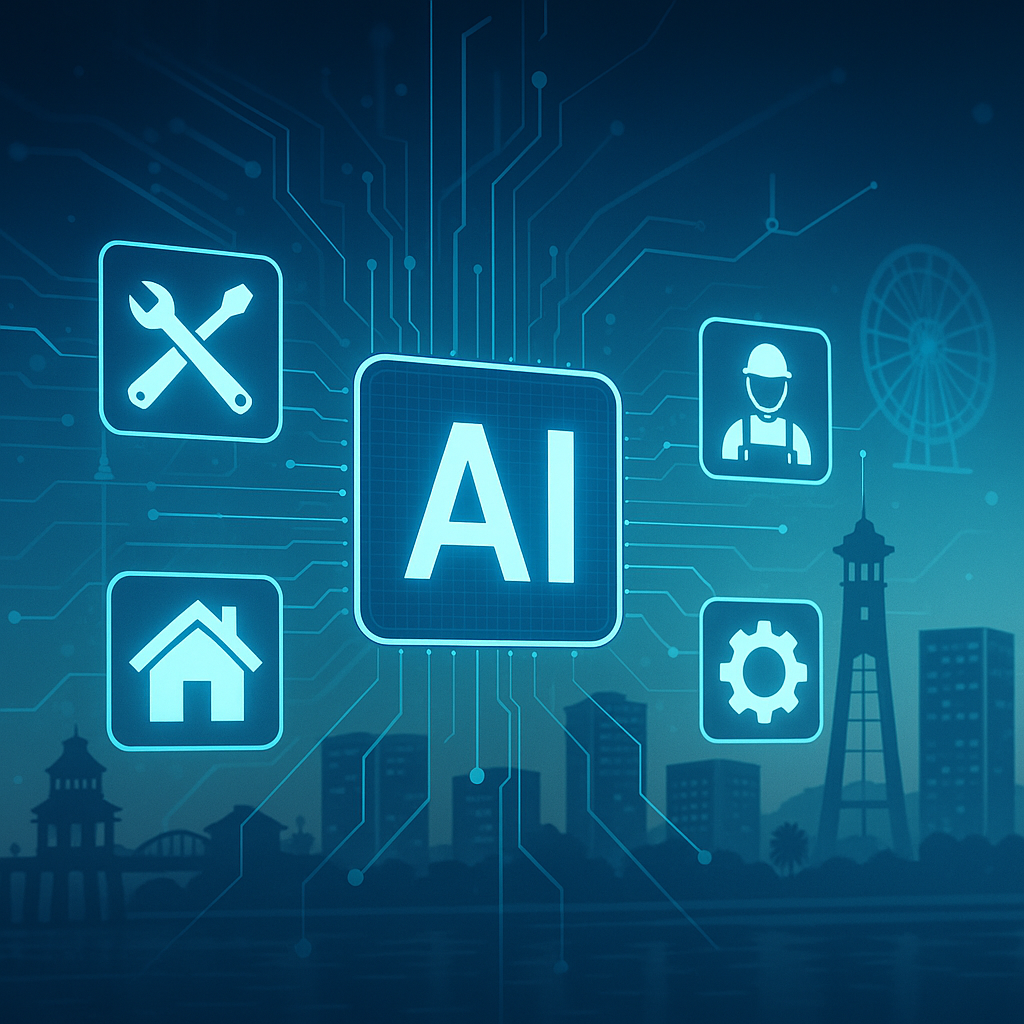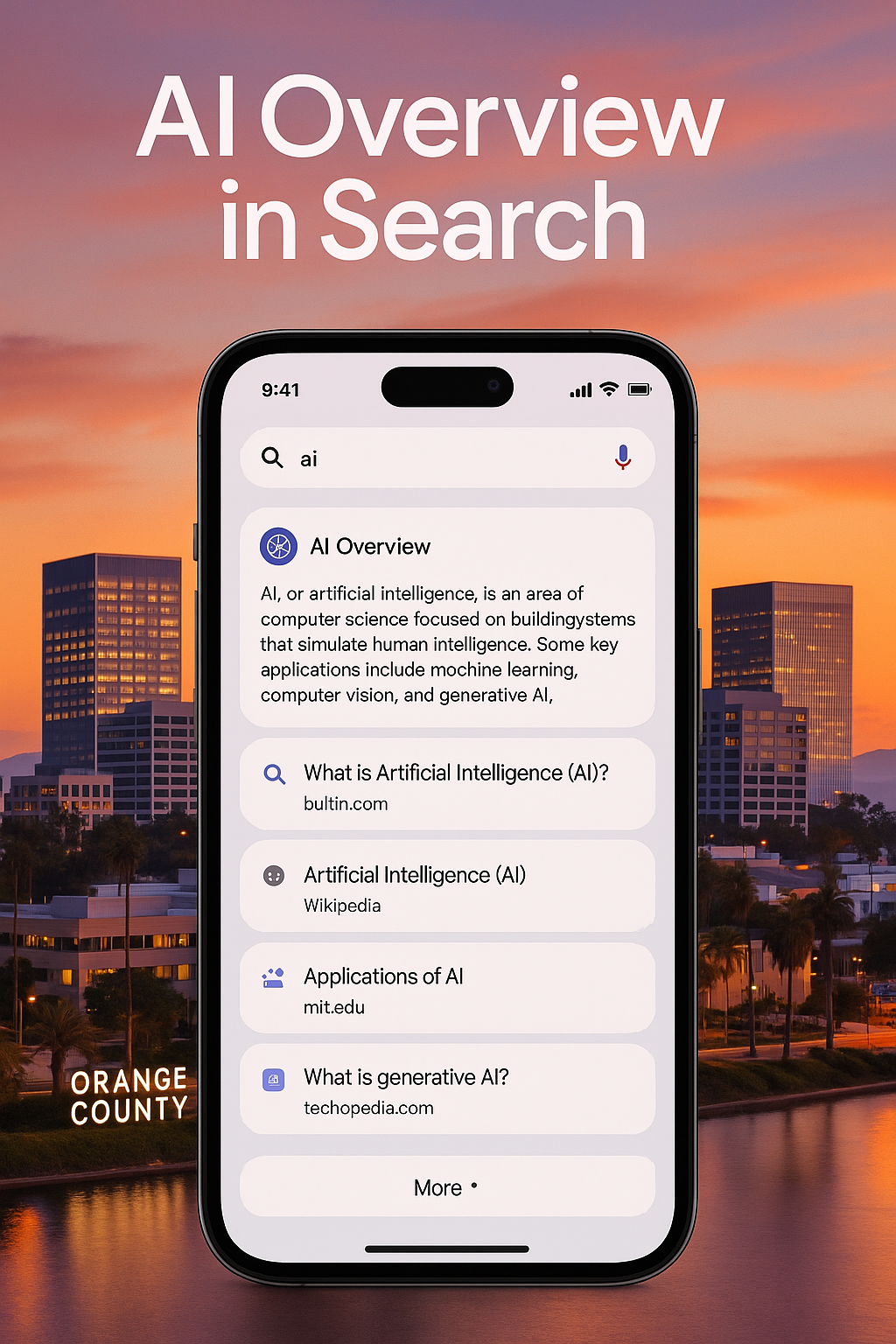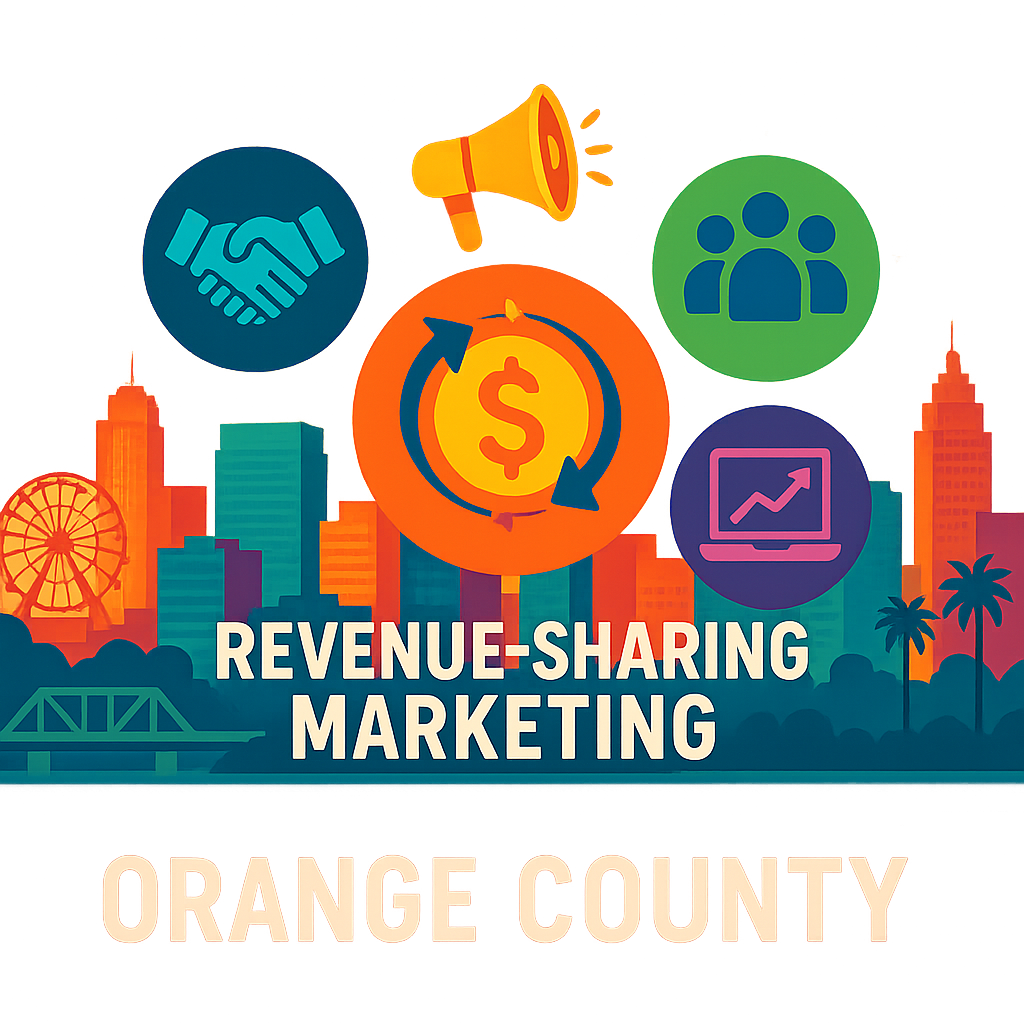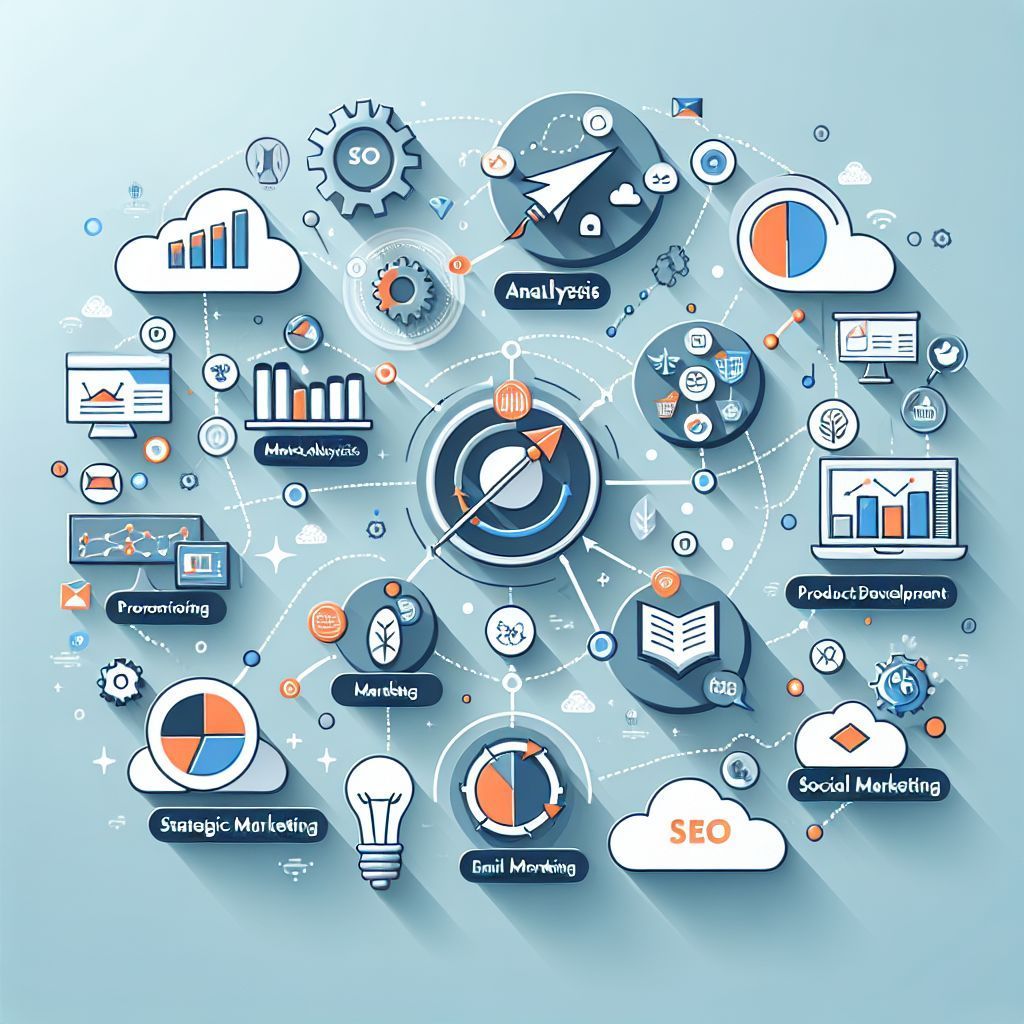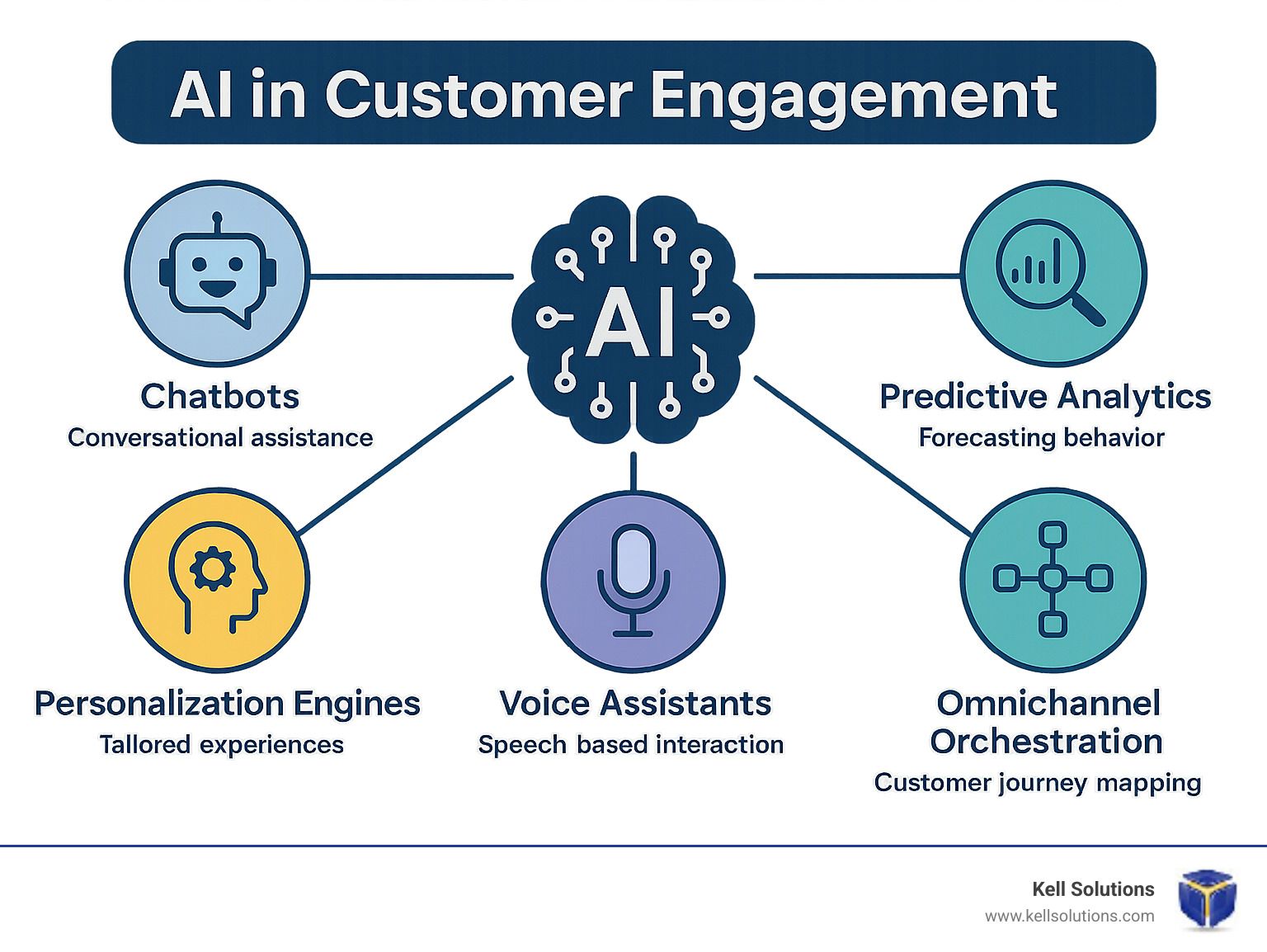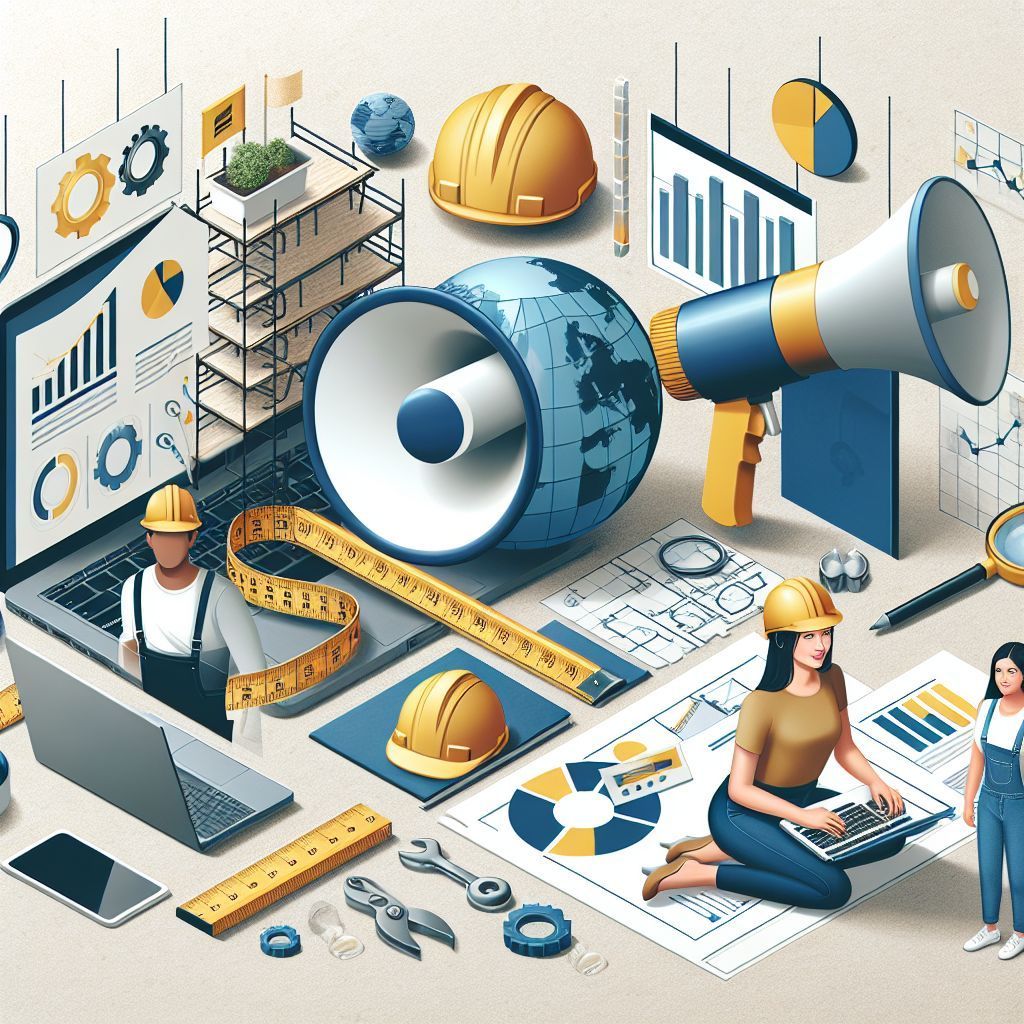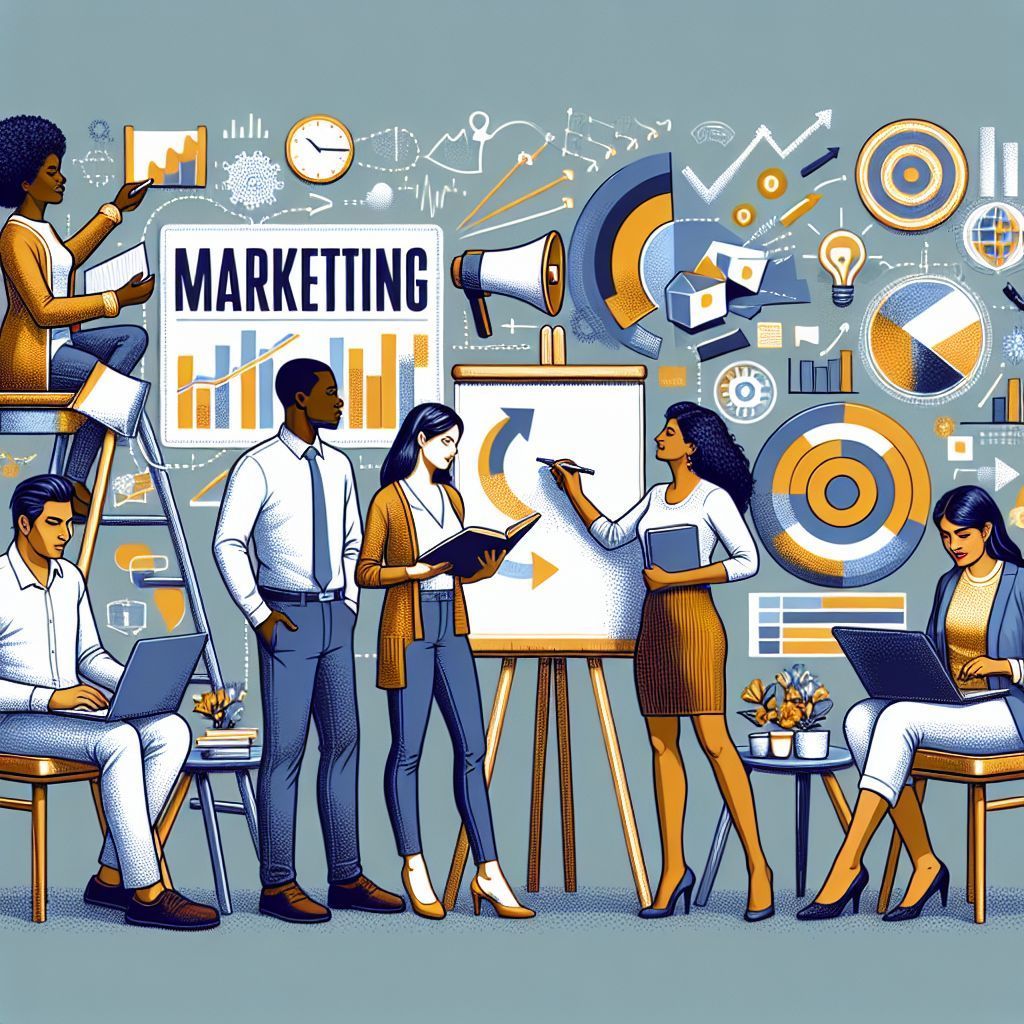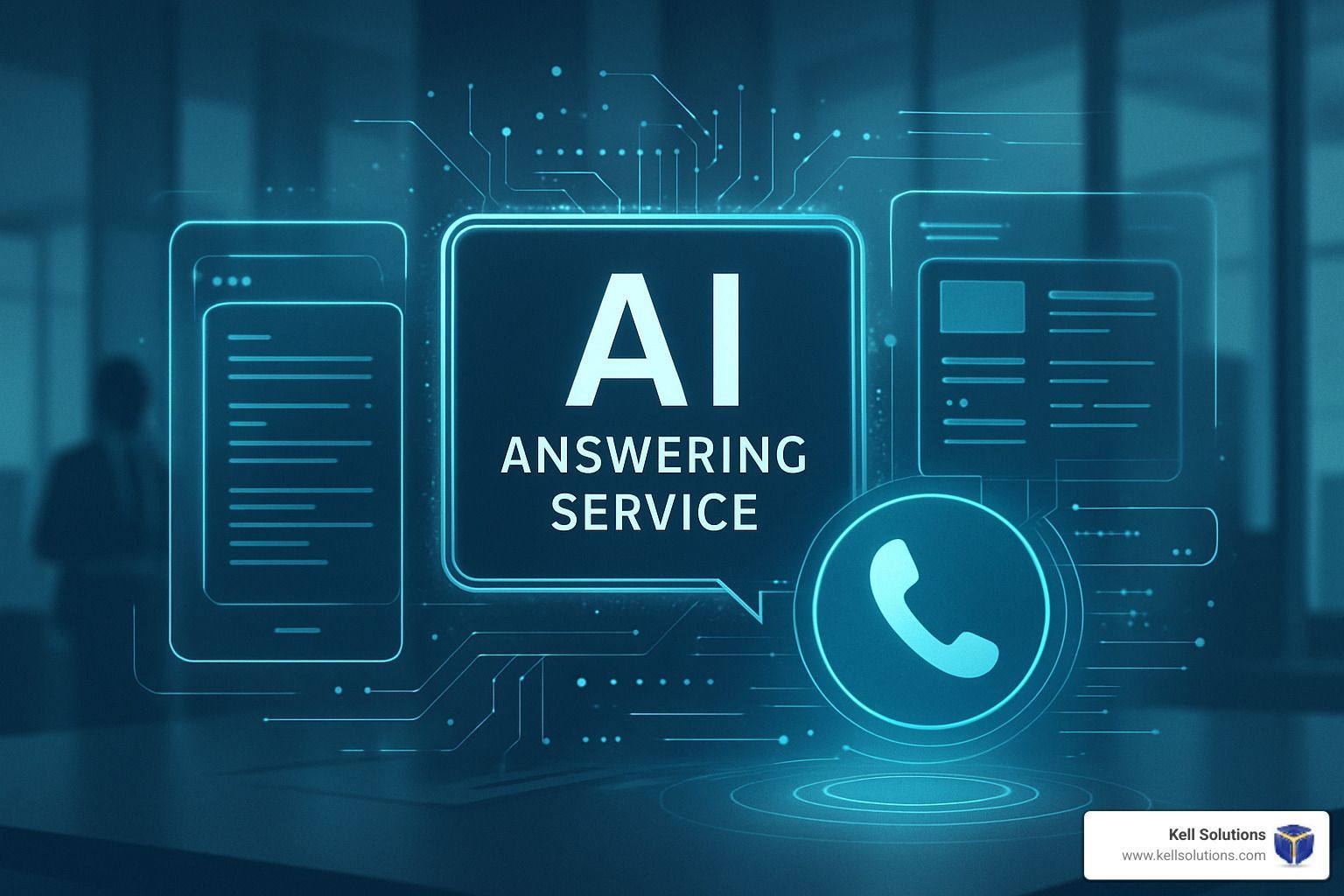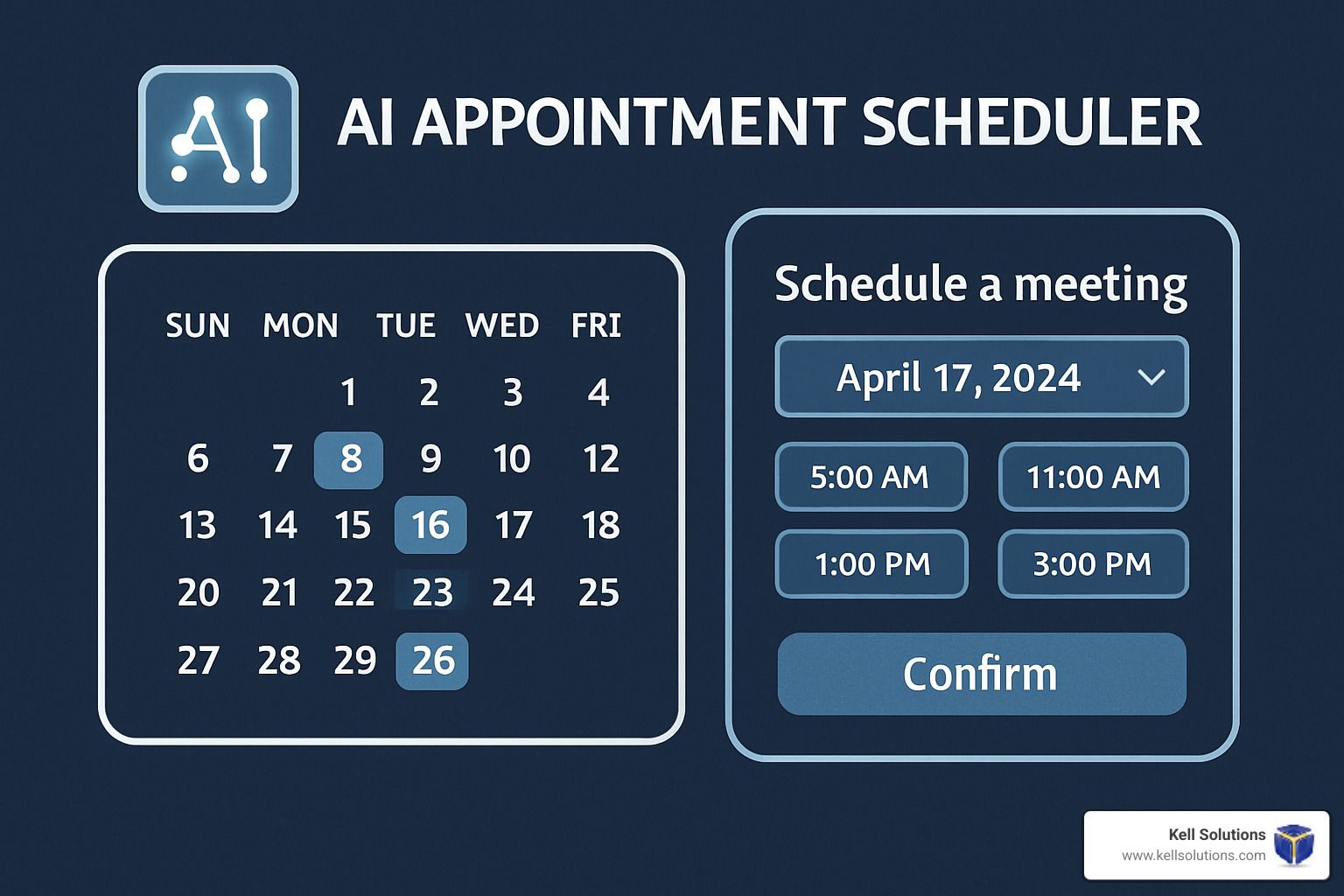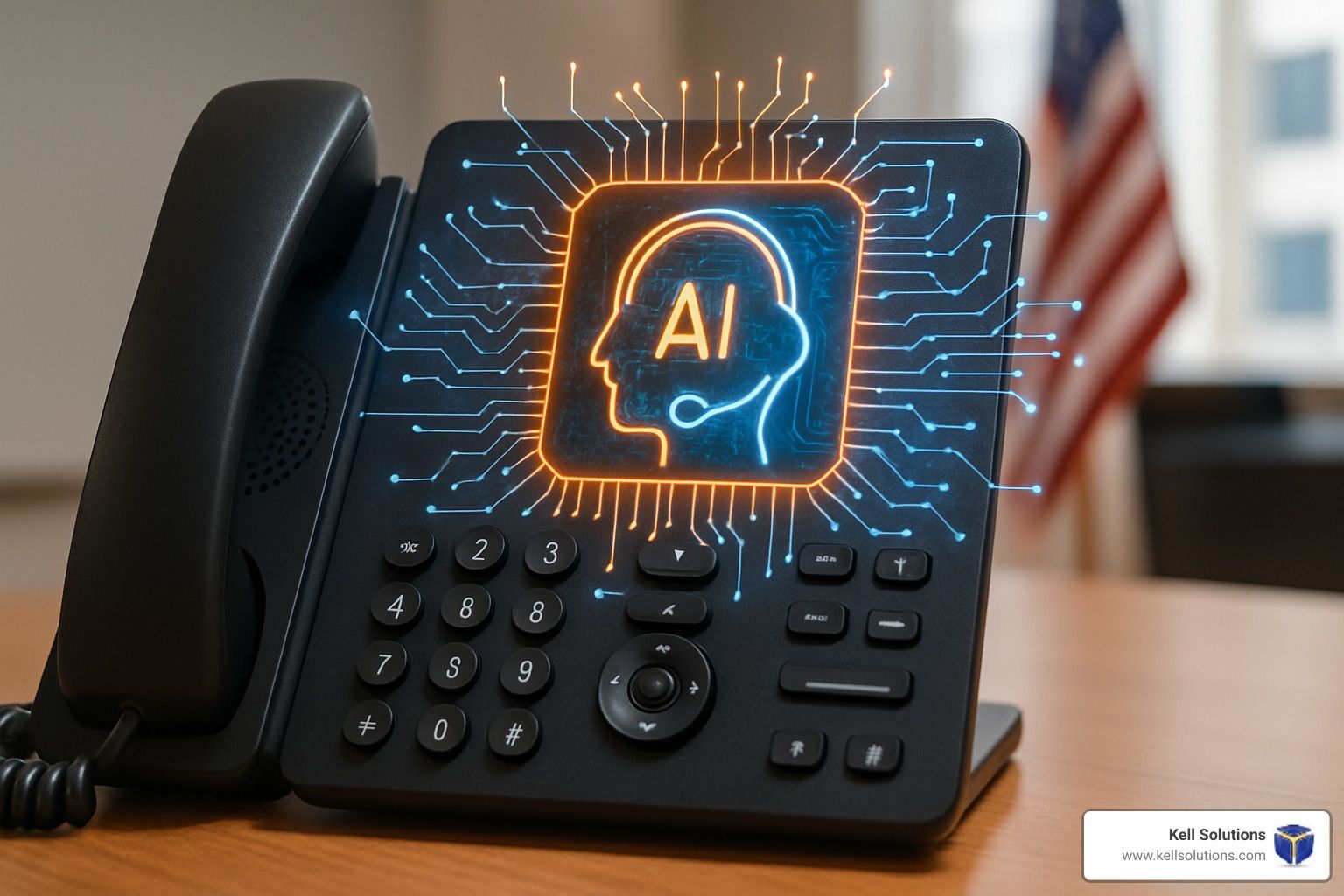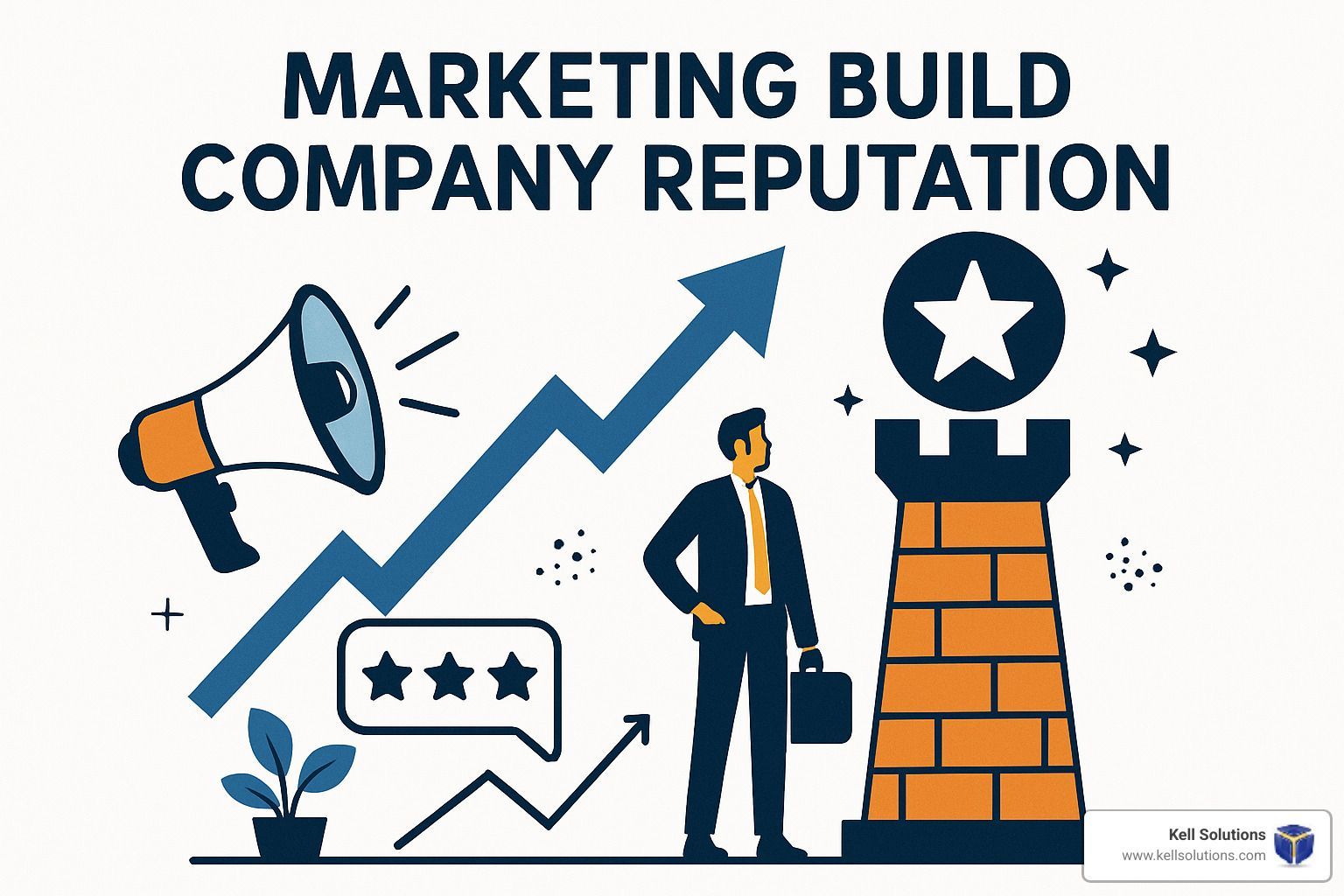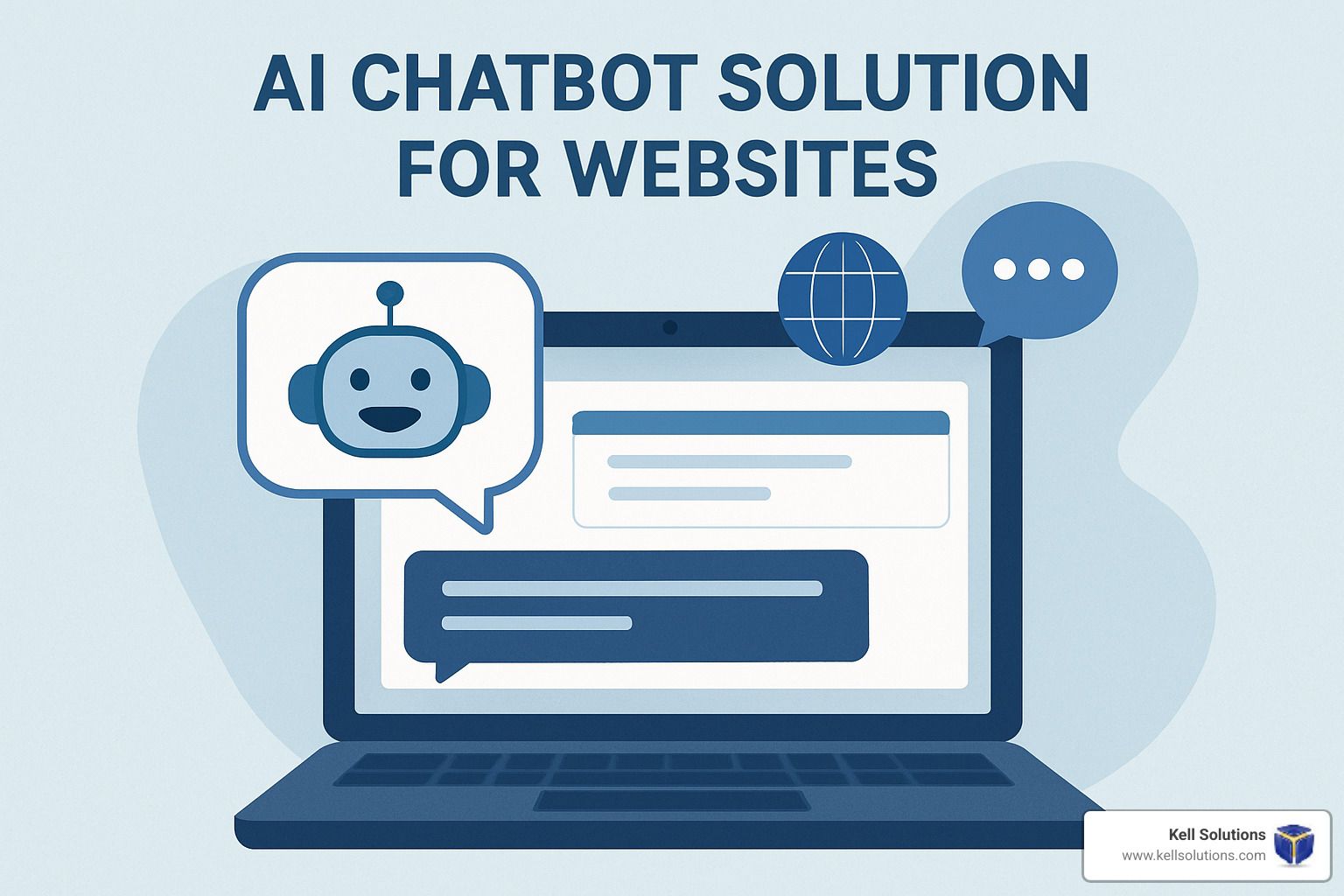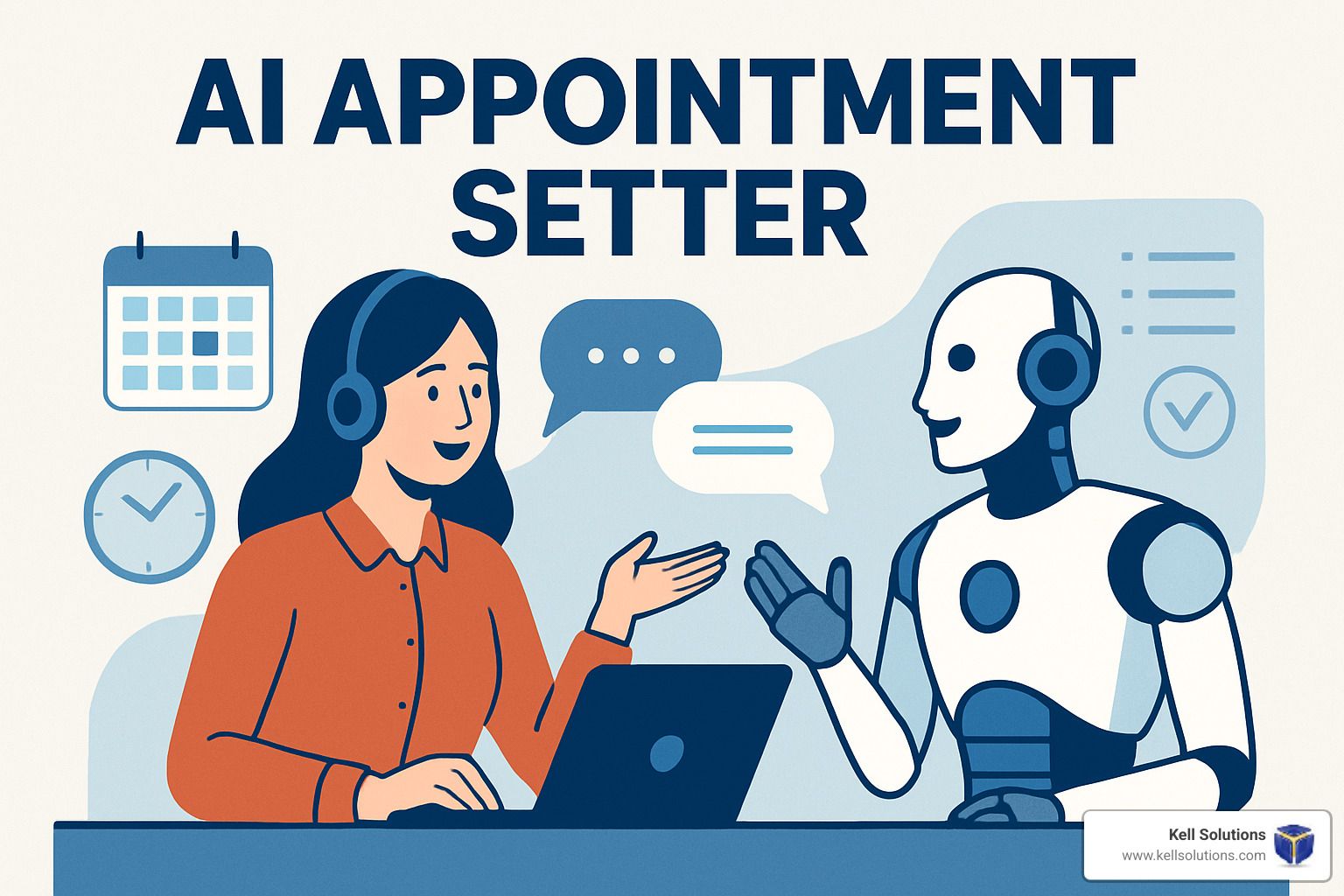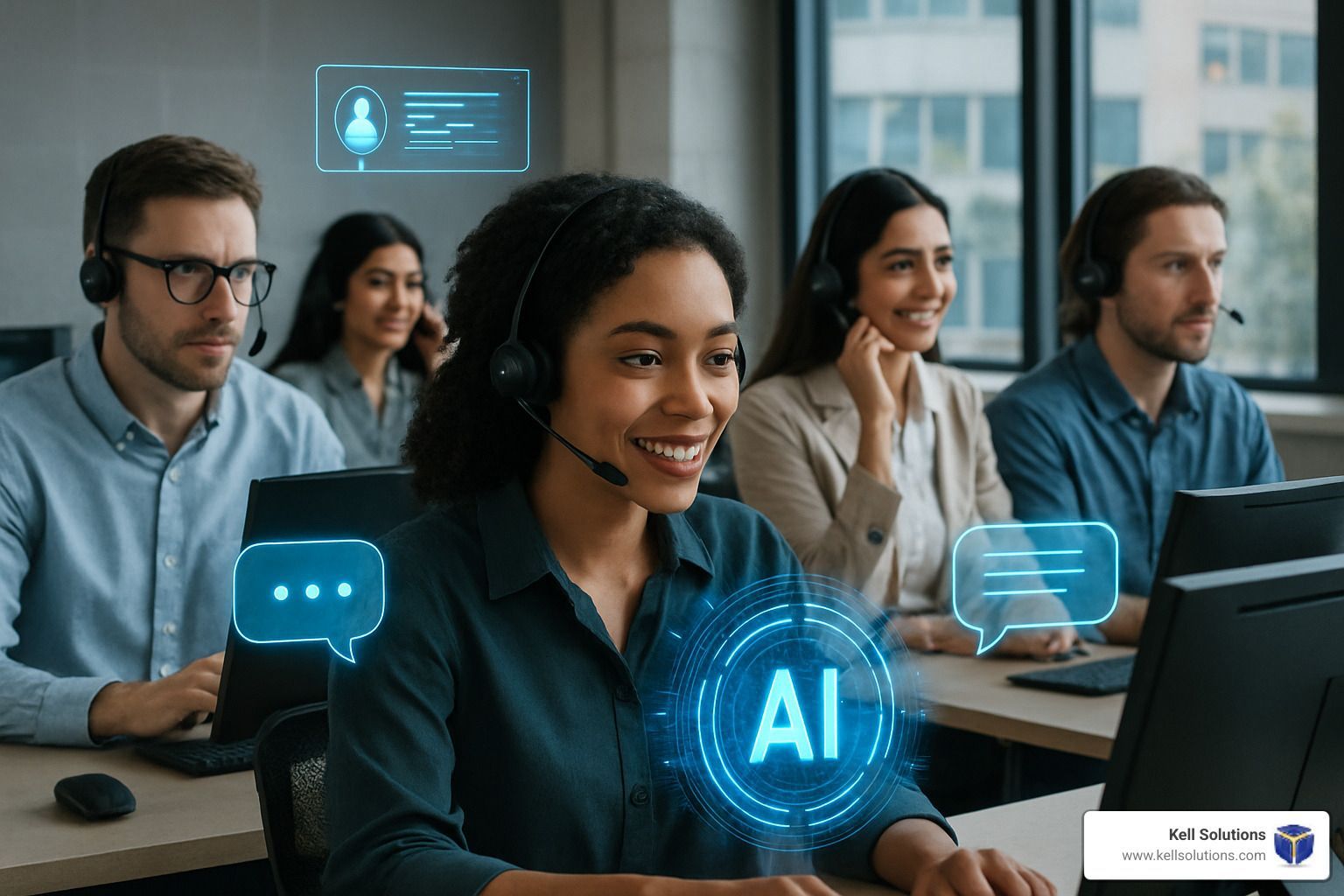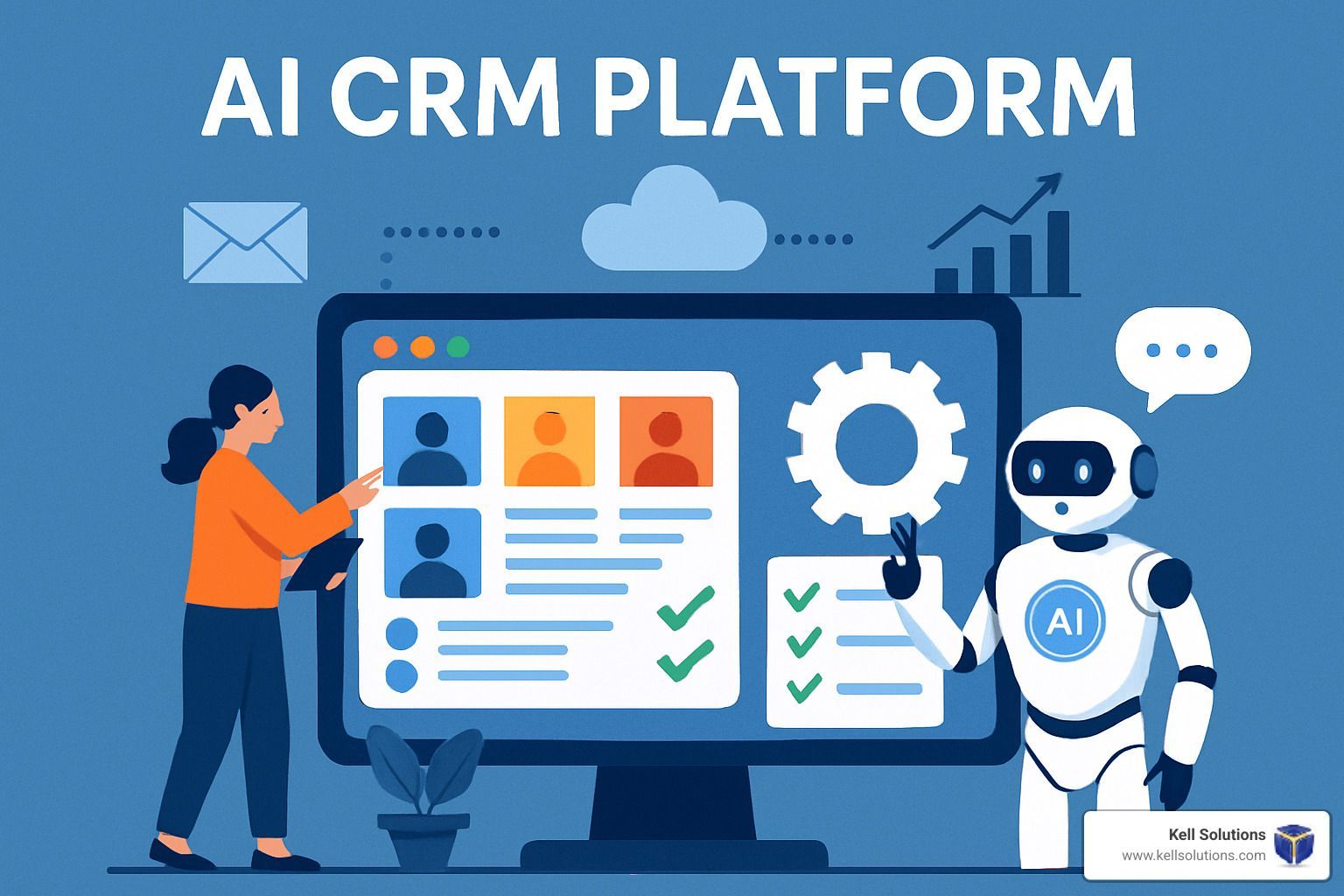AI Automated Workflows: Boost Efficiency with Artificial Intelligence
Why AI Automated Workflows Are Essential for Modern Business
AI automated workflows use artificial intelligence to handle repetitive tasks, make decisions, and optimize processes without constant human oversight. Here's what you need to know:
Key Components of AI Automated Systems:
- Machine Learning- Systems that learn and improve from data
- Natural Language Processing- Understanding and generating human language
- Robotic Process Automation- Handling rule-based digital tasks
- Generative AI- Creating new content, responses, and solutions
- Agentic Automation- Autonomous agents that reason and act independently
Primary Benefits:
- 90% of business leaders report cost and time savings
- Handle tasks 24/7 without breaks or sick days
- Scale operations without hiring additional staff
- Reduce human error in repetitive processes
Employees spend 41% of their time on repetitive, low-impact work, while 65% of desk workers believe generative AI will free up their time for strategic activities. Meanwhile, 84% of executives say AI is essential for growth objectives.
But here's the reality many small business owners face: missed calls, lost leads, and after-hours inquiries that slip through the cracks. Traditional automation follows rigid rules, but AI automated systems adapt, learn, and handle complex scenarios that would otherwise require human intervention.
I'm Gregg Kell, founder of Kell Web Solutions, and I've spent over 25 years helping small businesses leverage technology for growth, including developing AI automated solutions like VoiceGenie AI for service-based companies.
AI Automated Workflows Explained
At its core, AI automated workflows combine multiple technologies to create intelligent systems that can handle complex business processes. Unlike simple rule-based automation, these systems use artificial intelligence to make decisions, adapt to new situations, and continuously improve their performance.
The foundation of AI automated workflows rests on four key technologies:
Machine Learning enables systems to identify patterns in data and make predictions without being explicitly programmed for every scenario. For example, an AI voice agent can learn from previous customer interactions to better handle similar inquiries in the future.
Natural Language Processing (NLP) allows systems to understand and generate human language. This is what enables chatbots to have natural conversations with customers or voice agents to comprehend complex questions and provide relevant responses.
Robotic Process Automation (RPA) handles the mechanical aspects - clicking buttons, filling forms, moving data between systems. When combined with AI, RPA becomes intelligent enough to handle exceptions and variations.
Generative AI creates new content, responses, and solutions based on learned patterns. This technology can draft personalized emails, generate product descriptions, or create custom responses to unique customer inquiries.
Agentic Automation represents the latest evolution - autonomous agents that can reason, plan, and execute multi-step tasks independently. These systems can understand natural language instructions and carry out complex workflows without human oversight.
| Traditional Automation | AI Automated |
|---|---|
| Follows static rules and decision trees | Uses self-learning models that adapt |
| Requires explicit programming for each scenario | Learns from data and experience |
| Breaks when encountering unexpected situations | Handles variations and exceptions |
| Limited to repetitive, predictable tasks | Manages complex, dynamic processes |
| Cannot improve without human intervention | Continuously optimizes performance |
AI vs Traditional Automation
The difference between traditional automation and AI automated systems is like comparing a player piano to a jazz musician. The player piano can only play pre-programmed songs exactly as written, while the jazz musician can improvise, adapt to the audience, and create something new based on their experience and training.
Traditional automation relies on static rules and decision trees. AI automated systems use self-learning models that can understand context, recognize patterns, and make intelligent decisions. An AI voice agent doesn't just route calls - it can have actual conversations, qualify leads, book appointments, and handle complex inquiries that would normally require a human.
Intelligent & Agentic Automation Evolution
Intelligent automation combines RPA with AI capabilities like machine learning and NLP. These systems can handle variations, make decisions based on data, and adapt to new situations.
Agentic automation represents the cutting edge - autonomous agents that can understand goals, create plans, and execute multi-step workflows independently. These agents can reason about problems, learn from outcomes, and continuously optimize their approach.
According to Gartner, 30% of enterprises will automate more than half of their network activities by 2026. For service-based businesses, an agentic AI voice system doesn't just answer phones - it can qualify leads, understand service requirements, check availability, handle pricing discussions, and book appointments, all while maintaining a natural, helpful conversation.

Step-by-Step: Building Your First AI Automated Pipeline
Building an AI automated pipeline might seem daunting, but breaking it down into manageable steps makes the process much more approachable. We've helped hundreds of service businesses implement these systems, and the key is starting with a clear plan and building incrementally.
The typical AI automated pipeline follows seven core stages:
- Data Collection- Gathering relevant information from various sources
- Data Preparation- Cleaning, formatting, and structuring the data
- Model Training- Teaching the AI system using your specific data
- Data Processing- Real-time analysis and decision-making
- Continuous Learning- Ongoing improvement from new interactions
- Deployment- Putting the system into production
- Monitoring- Tracking performance and making adjustments
The human-in-the-loop approach is crucial throughout this process. While the system operates autonomously, human oversight ensures quality, handles edge cases, and provides feedback for continuous improvement.
For more detailed guidance on implementing AI systems in your business, check out our comprehensive AI Integration Guide.
Planning Your AI Automated Pipeline
Before diving into implementation, successful AI automated workflow projects require careful planning. We always start with workflow mapping - documenting current processes, identifying bottlenecks, and pinpointing where AI can add the most value.
Workflow Mapping Process:
- Document current manual processes step-by-step
- Identify repetitive tasks that consume significant time
- Note decision points that require judgment or pattern recognition
- Map data flows and system interactions
- Highlight pain points and inefficiencies
KPI Setting is equally important. Common KPIs for AI automated systems include:
- Response time reduction (often 60% faster or more)
- Lead conversion rate improvement
- Cost per interaction decrease
- Customer satisfaction scores
- Hours saved per week/month
Data Quality & Governance Checkpoints
Data quality makes or breaks AI automated systems. Poor data leads to poor decisions, biased outcomes, and unreliable performance.
Essential Data Quality Checks:
- Completeness- Are all required fields populated?
- Accuracy- Does the data reflect reality?
- Consistency- Are formats and values standardized?
- Timeliness- Is the data current and relevant?
- Validity- Does the data meet defined business rules?
Bias Mitigation is particularly important for customer-facing systems. Regular auditing, diverse data sources, and fairness testing help identify and correct these issues.
Privacy and Compliance considerations include GDPR requirements for data handling, customer consent management, and secure data storage.
From Prototype to Production
Moving from a working prototype to a production-ready AI automated system requires careful attention to reliability, scalability, and maintainability.
Key Production Considerations:
CI/CD (Continuous Integration/Continuous Deployment) ensures smooth updates and rollbacks. MLOps (Machine Learning Operations) practices help manage the unique challenges of AI systems - model versioning, performance monitoring, data drift detection, and automated retraining when needed.
Version Control becomes critical as your AI system evolves. Monitoring and Alerting systems watch for performance degradation, unusual patterns, or system failures.
Benefits, Challenges & Best Practices
The benefits of AI automated workflows are compelling, but they come with real challenges that need addressing. After implementing these systems for numerous service businesses, we've learned that success depends on understanding both sides of this equation.
Primary Benefits:
- Cost Savings: 90% of business leaders report significant cost and time savings
- Speed: AI systems can respond instantly, 24/7, without breaks
- Accuracy: Consistent performance without human error or fatigue
- Scalability: Handle increasing workload without proportional cost increases
Common Challenges:
- Integration Complexity: Connecting AI systems with existing tools and processes
- Change Management: Getting staff and customers comfortable with AI interactions
- Data Quality: Ensuring training data is representative and unbiased
- Transparency: Understanding how AI systems make decisions (the "black box" problem)
The black-box transparency issue is particularly important for businesses where decisions need explanation or justification.
Workforce Impact is nuanced. While AI automated systems handle routine tasks, they typically augment rather than replace human workers. According to Brookings, 30% of all workers could see at least 50% of their occupation's tasks disrupted by generative AI, but this often means shifting to higher-value activities rather than job elimination.
Measuring ROI of AI Automated Systems
Calculating the return on investment for AI automated systems requires looking beyond simple cost savings to include productivity gains, quality improvements, and business growth opportunities.
Direct Cost Savings:
- Reduced labor costs for routine tasks
- Lower error rates and rework
- Decreased training and onboarding expenses
- Reduced overtime and weekend coverage costs
Productivity Gains:
- Faster response times (often 60% improvement)
- 24/7 availability without additional staffing
- Simultaneous handling of multiple interactions
- Consistent service quality regardless of volume
Business Growth Metrics:
- Increased lead capture and conversion rates
- Improved customer satisfaction scores
- Higher customer retention rates
- Expanded service capacity without proportional cost increases
Time-to-Value varies by implementation complexity. Simple AI automated workflows like basic chatbots might show results within weeks, while comprehensive voice agent systems typically demonstrate ROI within 3-6 months.
Overcoming Common Roadblocks
Every AI automated implementation faces predictable challenges. Having helped dozens of businesses steer these issues, we've developed strategies for the most common roadblocks.
Legacy Integration often presents the biggest technical hurdle. Our approach focuses on API-first solutions and gradual migration rather than complete system replacement.
Change Management requires addressing both staff and customer concerns. Success comes from positioning AI as augmentation rather than replacement, providing thorough training, and maintaining human oversight for complex situations.
Upskilling becomes essential as job roles evolve. Rather than eliminating positions, AI automated systems typically shift human workers toward higher-value activities requiring creativity, empathy, and complex problem-solving.
Responsible Implementation Checklist
Implementing AI automated systems responsibly requires attention to ethics, transparency, and governance.
Explainability Requirements:
- Can the system explain its decisions in understandable terms?
- Are there clear escalation paths when AI confidence is low?
- Do customers know they're interacting with AI?
- Can staff override AI recommendations when appropriate?
Governance Framework:
- Who has oversight responsibility for AI system performance?
- What are the approval processes for model updates?
- How are bias and fairness regularly assessed?
- What are the incident response procedures for AI failures?
For more comprehensive guidance on implementing AI systems responsibly, explore our detailed Business Automation with AI resource.

Real-World Use Cases & Essential Tools
AI automated workflows are changing industries across the board, from healthcare to manufacturing to professional services. Understanding real-world applications helps identify opportunities in your own business while learning from successful implementations.
Healthcare Applications: AI automated systems excel in medical diagnostics, with algorithms detecting diseases in medical imaging with remarkable accuracy. Remote patient monitoring systems collect real-time health data and automatically alert clinicians to concerning changes. The findy of new drugs is being accelerated through AI automated research processes.
Manufacturing & Maintenance: Predictive maintenance systems use AI to analyze equipment sensor data, predicting failures before they occur and automatically scheduling maintenance. This approach can reduce downtime by 30-50% while extending equipment life.
Financial Services: Dynamic pricing engines adjust rates in real-time based on market conditions, customer profiles, and risk assessments. Fraud detection systems analyze transaction patterns to identify suspicious activity.
Customer Service Evolution: AI automated customer service has evolved far beyond simple chatbots. Modern systems can handle complex inquiries, understand context and emotion, and seamlessly escalate to human agents when needed. ABANCA, a Spanish retail bank, used a combination of generative AI, automation, and NLP to respond 60% faster to customer inquiries while delivering 1.2 million hours back to the business.
Voice Agent Systems: AI voice agents represent a significant advancement in customer interaction technology. Unlike traditional phone trees or simple chatbots, these systems can have natural conversations, understand complex requests, qualify leads, and complete transactions. For service-based businesses, AI voice agents can capture leads 24/7, book appointments, and provide information without requiring additional staff.
Selecting the Right Platform
Choosing the right platform for your AI automated workflows depends on your technical requirements, budget, integration needs, and long-term goals. The market offers everything from no-code builders to enterprise-grade platforms.
No-Code/Low-Code Builders make AI automation accessible to businesses without extensive technical resources. These platforms provide drag-and-drop interfaces, pre-built templates, and guided setup processes.
API-First Platforms offer more flexibility and customization options. They're designed to integrate with existing systems and can handle complex workflows with multiple decision points and data sources.
Evaluation Criteria:
- Integration Capabilities- How easily does it connect with your existing tools?
- Scalability- Can it handle your current and projected volume?
- Customization Options- How much can you tailor it to your specific needs?
- Support and Documentation- What help is available during implementation?
- Security and Compliance- Does it meet your industry requirements?
- Total Cost of Ownership- Including setup, training, and ongoing costs
- Performance and Reliability- What are the uptime guarantees and response times?
Future Trends to Watch
The AI automated workflow landscape is evolving rapidly, with several trends shaping the future of business automation.
Generative Workflows represent a significant shift from rule-based processes to AI systems that can create new content, solutions, and processes on demand.
Multi-Modal AI combines text, voice, image, and video processing in single workflows. A customer service system might analyze a customer's voice tone, review their account history, and generate both written and spoken responses custom to their emotional state and specific situation.
Low-Code Agent Orchestration makes it easier for non-technical users to create complex AI automated workflows. These platforms provide visual interfaces for connecting multiple AI agents, defining decision logic, and managing data flows between systems.
Agentic AI Evolution continues toward more autonomous systems that can understand high-level goals and independently determine the best approach to achieve them.
Frequently Asked Questions about AI Automated Workflows
What is the difference between AI, automation, and intelligent/agentic automation?
Traditional Automation follows predetermined rules and decision trees. If condition A exists, perform action B. These systems are reliable for repetitive tasks but cannot handle variations or unexpected situations.
AI (Artificial Intelligence) refers to systems that can learn from data, recognize patterns, and make decisions without explicit programming for every scenario. AI can handle variations and adapt to new situations.
Intelligent Automation combines traditional automation with AI capabilities. These systems can follow rules when appropriate but also make intelligent decisions when encountering new or complex situations.
Agentic Automation represents the latest evolution - autonomous agents that can understand goals, create plans, and execute multi-step workflows independently. These systems can reason about problems, adapt their approach, and continuously improve their performance.
The key difference is autonomy and adaptability. Traditional automation is like a factory assembly line - efficient but inflexible. Agentic automation is like a skilled employee who can understand objectives and figure out the best way to achieve them.
How do AI automated tools integrate with legacy systems?
Integration with existing systems is often the biggest technical challenge in AI automated implementations. Legacy systems weren't designed with AI integration in mind, but several approaches can bridge this gap effectively.
API Integration is the most common approach when available. Many modern systems provide APIs (Application Programming Interfaces) that allow AI systems to read data, trigger actions, and update records.
Database Integration involves connecting AI systems directly to existing databases. This approach requires careful attention to security and data integrity but can provide real-time access to business information.
File-Based Integration uses scheduled data exports and imports. While less neat than real-time integration, this approach works with almost any system and is often the most cost-effective solution.
Screen Scraping/RPA can automate interactions with systems that lack integration options. Robotic Process Automation tools can "watch" screens, enter data, and click buttons just like a human user.
Middleware Solutions act as translators between AI systems and legacy applications. These platforms handle data format conversion, protocol translation, and error handling.
The key is starting with the most critical integrations and building incrementally. Perfect integration isn't always necessary - sometimes simple data exports and email notifications can provide sufficient connectivity for AI automated workflows to add significant value.
Will AI automated workflows replace human jobs?
This question reflects legitimate concerns, but the reality is more nuanced than simple job replacement. Our experience implementing AI automated systems shows that the impact varies significantly by role and industry.
Job Change vs. Elimination: Most roles evolve rather than disappear. AI automated systems typically handle routine, repetitive tasks, freeing humans for higher-value activities requiring creativity, empathy, and complex problem-solving.
New Job Creation: AI implementations often create new roles - AI trainers, automation specialists, data analysts, and customer experience managers. These positions often offer better working conditions and higher compensation than the routine tasks they replace.
Industry-Specific Impacts:
- Customer Service: AI handles routine inquiries, humans focus on complex problems and relationship building
- Healthcare: AI assists with diagnostics and data analysis, humans provide care and make treatment decisions
- Legal: AI handles document review and research, lawyers focus on strategy and client counsel
- Home Services: AI manages scheduling and lead qualification, technicians focus on service delivery
Small Business Perspective: For small service businesses, AI automated systems often enable growth that creates more jobs rather than eliminating existing ones. A plumbing company that can answer calls 24/7 and book more appointments typically needs more technicians, not fewer.
The key is approaching AI implementation thoughtfully, with attention to employee development and clear communication about how roles will evolve rather than disappear.

Conclusion & Next Steps
AI automated workflows represent a fundamental shift in how businesses operate, offering unprecedented opportunities to improve efficiency, reduce costs, and improve customer experiences. The key to success lies not in replacing human intelligence but in augmenting it with systems that can handle routine tasks while humans focus on what they do best - building relationships, solving complex problems, and driving innovation.
For service-based businesses, the potential is particularly compelling. AI voice agents can capture leads around the clock, qualify prospects effectively, and book appointments seamlessly. This technology doesn't just save time - it captures revenue that would otherwise be lost to missed calls and after-hours inquiries.
Getting Started:
- Assess Current Processes- Identify repetitive tasks and bottlenecks
- Start Small- Implement pilot projects to learn and build confidence
- Focus on Data Quality- Ensure your AI systems have clean, relevant training data
- Plan for Integration- Consider how AI systems will work with existing tools
- Invest in Training- Help your team understand and accept AI augmentation
- Measure and Optimize- Track performance and continuously improve
Governance and Continuous Improvement: Successful AI automated implementations require ongoing attention to performance, ethics, and optimization. Regular auditing, bias testing, and customer feedback help ensure your systems continue delivering value while maintaining trust and transparency.
The businesses that thrive in the AI era will be those that accept these technologies thoughtfully, with attention to both technical excellence and human values. AI automated workflows aren't about replacing people - they're about empowering people to do their best work while technology handles the routine tasks that consume so much time and energy.
At Kell Solutions, we've seen how AI voice agents can transform service businesses. Our VoiceGenie AI system helps companies capture more leads, book more appointments, and provide better customer service without requiring additional staff or technical expertise.
Ready to explore how AI automated workflows can transform your business? Schedule a free demo to see how AI voice agents can capture leads and book appointments 24/7, ensuring you never miss another opportunity.
📚 About the Author Gregg Kell is a seasoned digital marketing strategist and founder of Kell Web Solutions, Inc., helping professional service firms grow through innovative AI-powered solutions like VoiceGenie AI. With over 20 years of experience in web development, lead generation, and business automation, Gregg is passionate about helping small businesses maximize growth and profitability through cutting-edge technologies.
When he's not helping businesses boost their bottom line, Gregg enjoys life by the beach in Laguna Beach, California, with his wife Debbie, celebrating over 40 years of marriage and entrepreneurial trips.
👉 Explore More from Gregg:

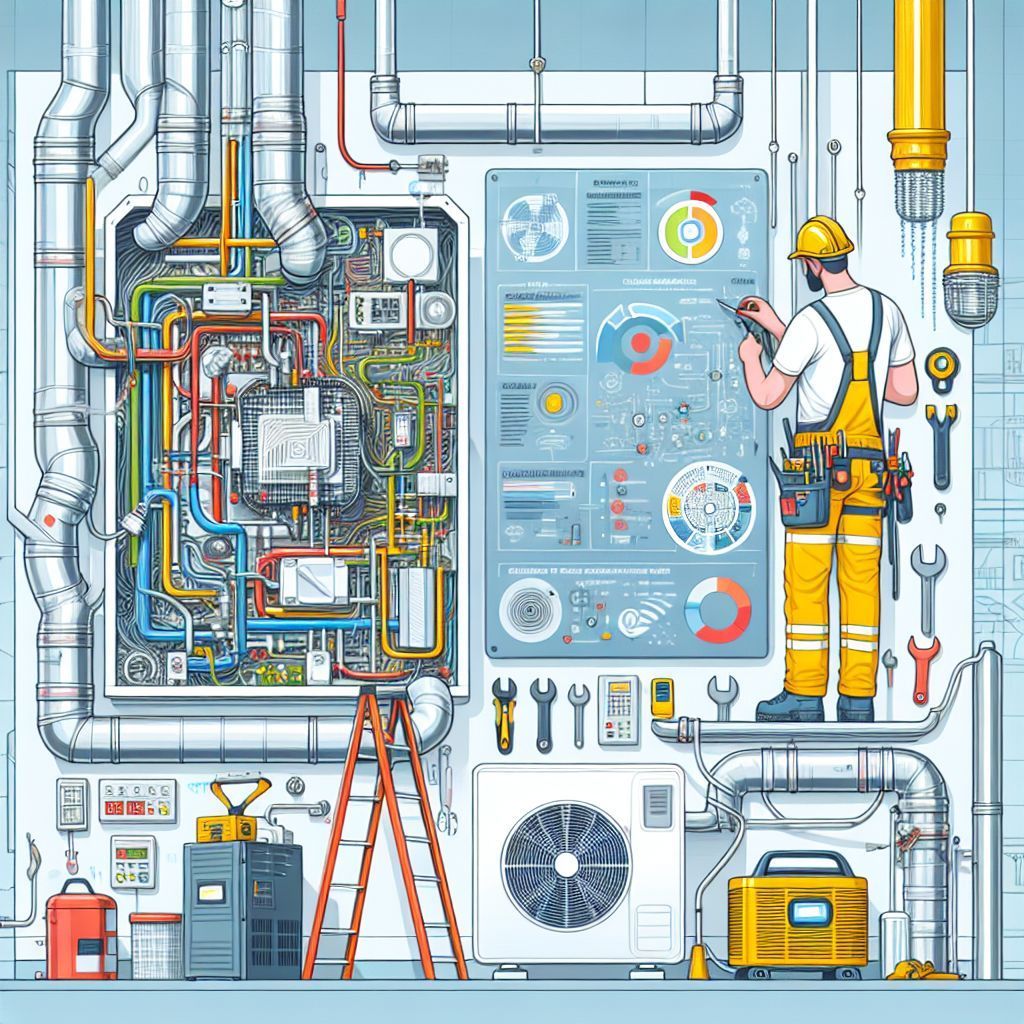
Orange County HVAC Google AI Overview Domination: 7 Proven Strategies to Capture Featured AI Results


